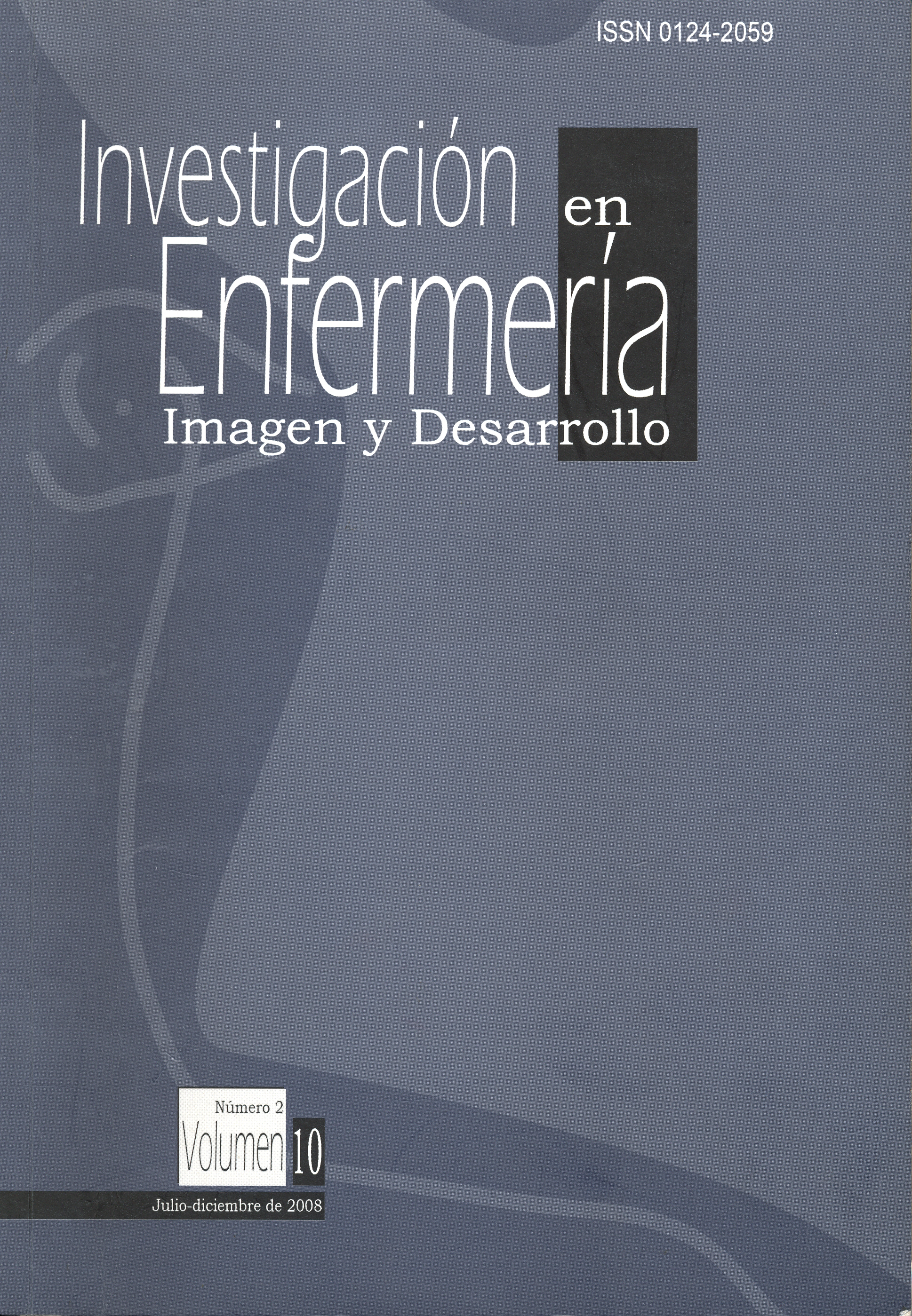Resumo
En Colombia, la tasa de embarazo en adolescentes se ha ido incrementando en forma paulatina. En 1987 correspondía al 7,5%, en 1997, al 14%, y actualmente ocupa el 20% del total de los nacimientos. Esta situación tiene comportamiento similar en el ámbito local, y así es como en el municipio de Apía, departamento de Risaralda, para 2004 la tasa de natalidad fue de 54 embarazos adolescentes; en 2005, de 36 embarazos, en 2003, de 43 embarazos, y en agosto de 2007, de 26. Por lo anterior, es necesario indagar qué ocurre con el uso de métodos anticonceptivos, ya que es ampliamente conocido que existen instrumentos y estrategias para disminuir la tasa de natalidad y aumentar el espacio intergenésico. De esta forma, se realizó un estudio cualitativo (enero a noviembre de 2007), cuyo objetivo fue identificar las vivencias del adolescente frente a la planificaicón familiar. Se entrevistaron 20 jóvenes entre los 12 y los 19 años de edad, que aceptaron voluntariamente participar en este trabajo , y que a la fecha usaban algún método de planificación. Los hallazgos revelaron que antes de ingresar al programa de planificación el conocimiento sobre sexualidad y planificación en ambos sexos era amplio y provenía, en general, de la institución educativa y del círculo social. Se concluye que la decisión de planificar está influida por el miedo a asumir una paternidad o maternidad precoz que impida cumplir propósitos o metas que el adolescente se haya planteado para su futuro; no obstante, pese a las campañas de planificación, se sigue evidenciando un aumento de embarazos en adolescentes. Se propone la búsqueda de estrategias sobre salud sexual y reproductiva, cuyo objetivo sea lograr un acercamiento a la vida cotidiana del adolescente que le permita una adherencia y continuidad en el uso de los métodos de planificación.
ABSTRACT
In Colombia, the rate of pregnancy in adolescents has been increasing in gradual form. In 1987 it corresponded to the 7.5% in 1997 to 14% and at the moment it occupies 20% of the total of the births. This situation has similar behavior in the local scope; it is a well as in the municipality of Apia, department of Ridaralda, for the alives born year the 2004 rate was of 54 adolescent pregnancies; in 2005, of 36 pregnancies; in 2006, of 43 pregnancies, and in August of 2007, of 26. By the previous thing, one becomes necessary to investigate what it happens with the use of contraceptive methods, since evident and is widely known that instruments and strategies exist to diminish their number and to increase the space between generations. Of this form, a qualitative study was made whose objective was as apposed to investigate the experiences of the adolescent the familiar planning. A structured inteview to 20 adolescents of 12 to 19 years of age was made, that voluntarily accepted to participate in this work, and that to the date was making use of some method of planing. The findings revealed that before entering the planning program the knowledge on sexuality and planning in both sorts he is ample and it comes in general from the educative institution and the social circle. One concludes that the decision to plan, is influenced by the fear to assume a paternity or precocious maternity that prevent the fulfillment of intentions or goals that the adolescent has considred for his future, in addition in spite of the planning campaigns is continued demosntrating an increase of pregnancies in adolescents. The search o strategies sets out on sexual and reproductive health, whose objetive goes to obtain an approach in the daily life of the adolexcent who allows to an adhesion and continuity him in the use of the planning methods.
A revista Investigación en Enfermería. Imagen y Desarrollo encontra-se registada sob a licencia Creative Commons Versão 4.0 Internacional. Portanto, esta obra pode se reproduzir, distribuir e comunicar publicamente em formato digital, sempre que dado o crédito apropriado para os autores e a Pontificia Universidad Javeriana. Permite-se citar, adaptar, remixar, transformar, autoarquivar, republicar e criar a partir do material, para qualquer fim, mesmo que comercial, sempre que indicado apropriadamente o nome do criador, provido um link para a obra original e indicado se mudanças foram feitas. A Pontificia Universidad Javeriana não retém os direitos sobre as obras publicadas e os conteúdos são responsabilidade exclusiva dos autores, os quais conservam seus direitos morais, intelectuais, de privacidade e publicidade.
O aval sobre a intervenção da obra (revisão, correção, edição, tradução, formatação) e a subsequente difusão disponibiliza-se através de licença de uso e não através de transmissão de direitos, o que representa que a revista e a Pontificia Universidad Javeriana são isentas de qualquer responsabilidade que puder se derivar de uma prática ética pobre por parte dos autores. Em consequência da proteção fornecida pela licença de uso, a revista não fica na obrigação de publicar retratações ou alterar informações já publicadas, a não ser que a errata seja decorrente do processo de gestão editorial. A publicação de conteúdos nesta revista não representa royalties para os contribuintes.


